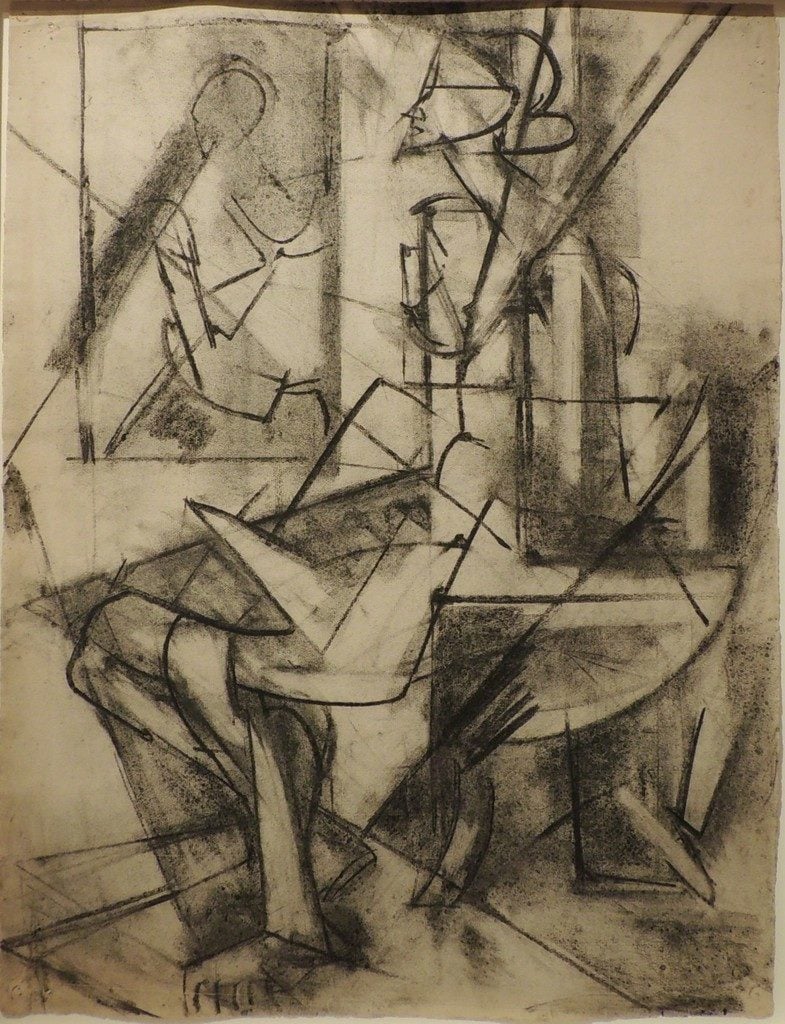Art Fairs
At Art Miami, Mark Borghi Celebrates Women Artists Who Broke the Rules
The show is inspired by a quote by Helen Frankenthaler.

The show is inspired by a quote by Helen Frankenthaler.

Sarah Cascone

Always known for its strong blue chip and secondary market offerings, Art Miami‘s 2017 edition includes a strong mini-exhibition of paintings and sculptures by women artists, all born between 1899 and 1945, titled “13 Women Who Broke All the Rules.”
Presented by Mark Borghi Fine Art, which has locations in New York City; Bridgehampton, New York; and Palm Beach, Florida, the show was inspired in part by the 2016 Denver Art Museum exhibition “Women of Abstract Expressionism.” At the fair, Borghi had a copy of the exhibition catalogue. (Impressively, for a museum publication, it is already in its third printing.) On the cover was Elaine de Kooning‘s Bullfight, which the gallery, in fact, sold to the museum for the show.
Being involved in the DAM exhibition, which brought long-overdue attention to the careers of such little known female Ab-Ex artists as Perle Fine (1905–1988) and Mary Abbott (1921–), got the gallery looking more closely at its own holdings. “It just kind of came together,” Borghi said to artnet News of the show, which was accompanied by an essay by Yingxi Lucy Gong, manager of the gallery’s Bridgehampton location.
The title is taken from a quote from Helen Frankenthaler (1928–2011): “One of the first rules is no rules.”
“Imagine being a woman painting in the ’50s against Willem de Kooning, and Jackson Pollock, and all those guys,” said Borghi. “They had to break the rules.”
“I was thinking of Michael West and how she had to change her name from Corinne to a man’s name at the suggestion of Arshile Gorky,” he added. “These women had it tough.”
The dealer has drawn connections between a baker’s dozen worth of artists, including Abbot, West (1908–1991), Hedda Sterne (1910–2011), and Charlotte Park (1918–2010). A Lee Krasner charcoal is paired with another by her friend Mercedes Matter. “Lee and Mercedes met in jail during the WPA,” said Borghi. “They were both arrested for striking.”
The works are also similar, having both been created in a class taught by Hans Hofmann. “Obviously, you can see the connection,” said Borghi, pointing to the upper left of Matter’s drawing, where Hofmann had inserted a small drawing of his own, showing how Matter might rework the composition.

Mercedes Matter, Untitled (Seated Figure), c. 1946. The upper left portion includes a suggestion by her teacher, Hans Hofmann. Courtesy of Mark Borghi Fine Art.
The booth’s showstopper is a massive Pat Lipsky (1941–) canvas called Glowing, a liquid zone of color floating on the canvas.
Lipsky’s clearly working in the tradition of Frankenthaler and her Color Field Paintings. The older artist is represented by pieces such as April VI (1962), a small oil on paper work, and New York VI (1972), done in acrylic and watercolor.
On the booth’s onside wall hangs On My Way, painted this year by Natalie Edgar, who was born in 1935 and married sculptor Philip Pavia, one of the founders of the famed New York artist and intellectual group the Club, which counted Willem de Kooning, Robert Motherwell, and Leo Castelli among its members. Still working today, Edgar brings the gallery’s story of these women through to the present day, providing the perfect ending to the exhibition.